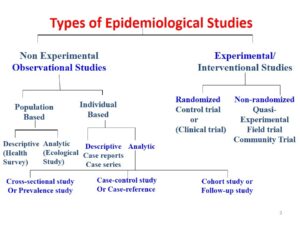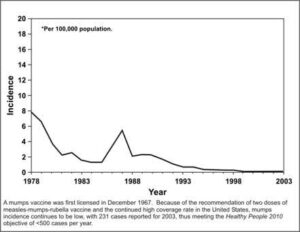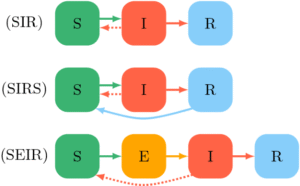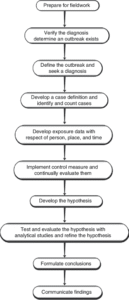Introduction to Epidemiology: Understanding the Science of Public Health
What is Epidemiology?
Epidemiology is the cornerstone of public health, serving as the scientific study of the distribution, patterns, and determinants of health-related events (such as diseases) in specific populations. It helps identify risk factors, track disease outbreaks, and develop strategies for prevention and control.
Epidemiologists answer critical questions like:
– Who is affected by a disease?
– Where do outbreaks occur?
– When do diseases spread?
– Why do certain populations face higher risks?
– How can diseases be prevented or controlled?
Key Concepts in Epidemiology
1. Disease Frequency – Measures how often a disease occurs in a population (e.g., incidence and prevalence rates).
2. Disease Distribution – Examines patterns by person, place, and time.
3. Determinants of Disease – Investigates causes (e.g., biological, environmental, behavioral).
Types of Epidemiological Studies
Epidemiologists use different study designs to investigate health-related phenomena:
*Descriptive: Examines disease distribution by time, place, and person. Just like tracking COVID-19 cases by country.
*Analytical: Tests hypotheses about disease causes. Comparing smokers vs. non-smokers for lung cancer risk.
*Experimental: Involves interventions (e.g., clinical trials). The process of Testing a new vaccine’s effectiveness.
*Observational: Observes without intervention (e.g., cohort studies). Studying diet and heart disease over 10 years.

Measures of Disease Frequency:
Understanding disease spread requires quantifying occurrence:
1. Incidence vs. Prevalence
Incidence: Number of **new** cases in a population over a specified time.
Prevalence: Total number of cases (**new + existing**) at a given time.
Example:
– If 50 new diabetes cases arise in a town of 10,000 in a year, the **incidence rate** is 5 per 1,000.
– If 300 people already have diabetes, the **prevalence** is 3%.
(Graph: Line chart showing incidence vs. prevalence trends over time.)

2. Mortality vs. Morbidity
Mortality: Deaths due to a disease.
Morbidity: Illnesses and complications caused by a disease.
Epidemiological Models & Outbreak Investigation
Epidemiologists use models to predict disease spread:
1-The SIR Model (Susceptible-Infectious-Recovered)
A basic model for infectious diseases:
**S** = Susceptible individuals
**I** = Infected individuals
**R** = Recovered/immune individuals
(Diagram: Flowchart of SIR model transitions.)

Steps in Outbreak Investigation
1. **Case Identification** – Confirm diagnoses.
2. **Descriptive Analysis** – Who, where, when?
3. **Hypothesis Generation** – Possible causes.
4. **Analytical Studies** – Test hypotheses (e.g., case-control studies).
5. **Intervention & Control** – Implement preventive measures.
Step-by-step outbreak investigation process

Applications of Epidemiology
Epidemiology extends beyond infectious diseases:
– **Chronic Diseases** (e.g., heart disease, cancer)
– **Environmental Health** (e.g., air pollution effects)
– **Injury Prevention** (e.g., car accidents)
– **Global Health** (e.g., malaria eradication efforts)
Conclusion
Epidemiology is a powerful tool for safeguarding public health. By analyzing disease patterns, identifying risks, and guiding interventions, epidemiologists play a crucial role in preventing outbreaks and improving global health outcomes.
